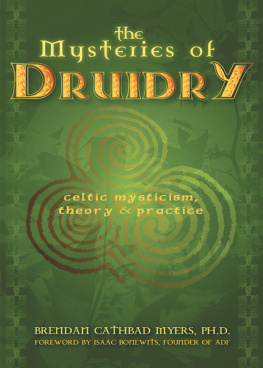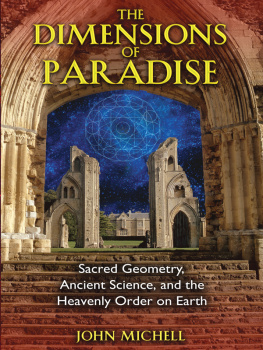Gina T. Gibbons - Ancient and Modern Mysteries of the Civilization: The great mystical ways of the ancients
Here you can read online Gina T. Gibbons - Ancient and Modern Mysteries of the Civilization: The great mystical ways of the ancients full text of the book (entire story) in english for free. Download pdf and epub, get meaning, cover and reviews about this ebook. year: 2020, genre: Religion. Description of the work, (preface) as well as reviews are available. Best literature library LitArk.com created for fans of good reading and offers a wide selection of genres:
Romance novel
Science fiction
Adventure
Detective
Science
History
Home and family
Prose
Art
Politics
Computer
Non-fiction
Religion
Business
Children
Humor
Choose a favorite category and find really read worthwhile books. Enjoy immersion in the world of imagination, feel the emotions of the characters or learn something new for yourself, make an fascinating discovery.

- Book:Ancient and Modern Mysteries of the Civilization: The great mystical ways of the ancients
- Author:
- Genre:
- Year:2020
- Rating:5 / 5
- Favourites:Add to favourites
- Your mark:
- 100
- 1
- 2
- 3
- 4
- 5
Ancient and Modern Mysteries of the Civilization: The great mystical ways of the ancients: summary, description and annotation
We offer to read an annotation, description, summary or preface (depends on what the author of the book "Ancient and Modern Mysteries of the Civilization: The great mystical ways of the ancients" wrote himself). If you haven't found the necessary information about the book — write in the comments, we will try to find it.
Gina T. Gibbons: author's other books
Who wrote Ancient and Modern Mysteries of the Civilization: The great mystical ways of the ancients? Find out the surname, the name of the author of the book and a list of all author's works by series.
Ancient and Modern Mysteries of the Civilization: The great mystical ways of the ancients — read online for free the complete book (whole text) full work
Below is the text of the book, divided by pages. System saving the place of the last page read, allows you to conveniently read the book "Ancient and Modern Mysteries of the Civilization: The great mystical ways of the ancients" online for free, without having to search again every time where you left off. Put a bookmark, and you can go to the page where you finished reading at any time.
Font size:
Interval:
Bookmark:
Ancient and Modern Mysteries of the Civilization
The great mystical ways of the ancients
Gina T. Gibbons
All rights reserved
Gina T. Gibbons , 2017
Camea Publish, 2018
Cover design by Dennis Westingen
Fotos by:
Gina Smith
Tanya Dolski
Sam Sanderson
Bill Carson
Why is humanity trying to find out what was millions of years ago, what knowledge did ancient civilizations have? We are looking for a source, because we think that by revealing it, we will know why we exist. Mankind wants to find where the starting point is, where it all began, because it thinks that there probably has an answer for what is all this and what will be at the end.
The history of civilizations has more than one thousand years. During this time, whole cultures appeared and disappeared on the planet, about which very little is currently known. Scientists, however, argue that almost all of them had a very high level of development that surpasses the modern one many times.
In the book Ancient and Modern Mysteries of the Civilization we will acquaint readers with obscure pages of history. We will visit archaeological sites and try to uncover the secrets of the past. In addition to well-known facts, we will be offered the results of recent discoveries. We will feel a connection with ancient cultures, turn our attention to artifacts and understand the hopes and aspirations of the people of rural civilizations.
Content:
Unfortunately, English is not the author's native language. All errors and inaccuracies in the book remain on his conscience.
Can a planet be alive?

Can a planet be alive? That was what Lynn Margulis, an outstanding biologist of the late 20th century, a brilliant intellector and a non-standardist, thought. Together with chemist James Lovelock, she viewed life as a planet-changing phenomenon, and considered the difference between alive and inanimate not as pronounced as is commonly believed.
Many members of the scientific community ridiculed their theory, known as the Gay Hypothesis, as pseudoscientific, and questioned their reputation. But now Margulis and Lovelock can take revenge. Recent scientific discoveries give reason to take their hypothesis more seriously. It is based on the idea of the connection between planets and living organisms, which changed our understanding of both these concepts and forms our idea of other worlds.
Studying together the biosphere of the Earth, Margulis and Lovelock came to the conclusion that it possesses some inherent properties of living creatures. This, apparently, indicates a "homeostasis", that is, self-regulation. Many of the life-sustaining abilities of our planet are remarkably resilient. The range of climatic temperatures, the oxygen content in the atmosphere, as well as the acidity, chemical composition and degree of salinity of the ocean - all this is biologically mediated and remained in the suitable for life range, despite the past hundreds of millions of years. Margulis and Lovelock suggested that the entire set of living organisms is in close interaction with the environment by regulating these global characteristics. They recognized the fact that the Earth is in a sense a living organism. Lovelock called this the Gaia phenomenon.
Earth and life have evolved and continue to develop together.
Margulis and Lovelock showed the insufficient validity of the picture of Darwins biological evolution. Darwin, defining the mechanism by which living organisms adapt to environmental changes, made us understand that life on Earth is a continuous process, growth and reproduction, as well as the transfer of genes from the common root. From the point of view of Darwin, the Earth was a kind of scene with changing scenery to which life had to adapt. But who changed the scenery? Or what? Margulis and Lovelock suggested that the planet Earth is not dead, but is an animated part of a larger entity consisting of the biosphere and "inanimate" matters that give shape to the Earth's biota, are responsible for it and pass through it cyclically.
Yes, life adapts to environmental changes and is formed by natural selection, but it also opposes the environment, changing it, and the planet itself. Now this is as obvious as the air filled with oxygen that we breathe. Thus, evolution is not a series of attempts to adapt to inanimate events, but a system of response and exchange. Life is not just adjusting to the dynamically changing appearance of the planet. Most likely, there was a mutual formation of living organisms and the Earth in the process of their joint evolution. If you look at the planet from this point of view, you will see that everything: coral reefs, limestone cliffs, estuaries, marshes and islands of cave guano - is part of this larger living entity. You will understand that the surface and the bowels of the Earth are alive.
Gay's hypothesis before and now is taken very alertly and not completely. There are a number of reasons for this. One of them is the usual inertia, the standard conservative reluctance to adopt a new way of thinking. In addition, the theory was considered blurred and uncertain. Some complained about the inability of her adherents to present uncommon, reasonable, experimentally verifiable judgments. How can one evaluate, counterpose or accept an idea in which there is no clear clarity or which different people perceive in different ways? There is certainly some truth in this. Gaia's theory was formulated in various ways. It did not help that Margulis and Lovelock tried to mix science with philosophy and poetry and did not at all object to contradictions; I would say they liked it.
The truth is that despite the widespread name, the Gaia principle is not exactly a hypothesis. This is a perspective, an approach within which scientific research is being conducted on life on the planet the planet alive, and not just the one on which there is life this is the main thought, simple but deep. Because life is not a minor trifle that arose on an already functioning planet Earth, but an integral part of its evolution and characteristics. Over the past few decades, the followers of the theory of Gaia have almost achieved victory. In fact, the opposition never gave up and did not recognize its defeat, but the generally accepted science of Earth lost its position and joined forces with chemistry, climatology, theoretical biology and some other areas of knowledge and renamed itself the "science of the Earth system."
The approach of Gaia, provoked by the cosmic comparison of the Earth with its supposedly lifeless neighbors, led to a deeper understanding of how much our planet has changed under the influence of its inhabitants. Comparing the history of the life of the Earth with its brethren, we see that in the very early stages of its development, the Earth began to develop along a different path. From this point on, the planet and living organisms began their joint development.
Having studied the Earth with the help of modern tools, having seen it entirely from a distance, having drilled wells on the ocean floor and mapping global biochemical cycles of elements, nutrients and energy with the help of magic glasses generating multispectral images, we found out that the effect of life on the planet is more complex and a comprehensive process than we could ever imagine.
Oxygen, which we take for granted, is a byproduct of the vital activity of organisms that interferes with the geochemical cycles of the planet: collecting solar energy to split water molecules, storing hydrogen atoms and reacting them with CO2 to produce organic food. In the upper layers of the Earths atmosphere, a portion of this oxygen is converted into the ozone layer by the action of ultraviolet light, which serves as a shield for the planet from the harmful effects of ultraviolet radiation, making its surface habitable. The emergence of this protective layer was followed by the emergence of life from the ocean and the appearance of forests on the continents. This made the once lifeless continents suitable for the existence of living organisms.
Next pageFont size:
Interval:
Bookmark:
Similar books «Ancient and Modern Mysteries of the Civilization: The great mystical ways of the ancients»
Look at similar books to Ancient and Modern Mysteries of the Civilization: The great mystical ways of the ancients. We have selected literature similar in name and meaning in the hope of providing readers with more options to find new, interesting, not yet read works.
Discussion, reviews of the book Ancient and Modern Mysteries of the Civilization: The great mystical ways of the ancients and just readers' own opinions. Leave your comments, write what you think about the work, its meaning or the main characters. Specify what exactly you liked and what you didn't like, and why you think so.






